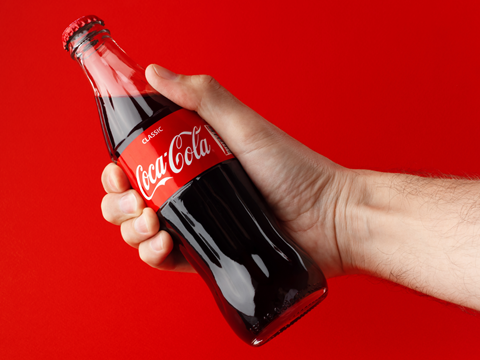
The Coca-Cola Company has lowered the ambition of its voluntary environmental goals. Having extended its timeframe to 2035, it now aspires to achieve 40% recyclate in its primary packaging and collect 75% of the bottles and cans it markets, among other targets.
Currently, The Coca-Cola Company says that over 95% of its primary consumer packaging is designed to be recycled. It previously sought to achieve 100% by 2025, and to use at least 50% recycled material in its primary packaging by 2030.
Last year, it reported using 27% recycled materials in its primary packaging worldwide, 17% of which was rPET.
Now the company aspires to use between 35% and 40% recycled material in its primary plastic, glass, and aluminium packaging by 2035; this includes driving up its used of recycled plastic to between 30% and 35% across the world.
The implementation of recycled content, alongside further developments like lightweighting, is expected to reduce emissions and avoid the use of virgin plastics – yet the company highlights ‘costs, quality and scaling innovation’ as ‘dynamic external factors that will affect implementation’.
On another note, it plans to drive the collection of 70-75% of the equivalent number of bottles and cans it introduces to the market every year. If it reaches this goal, it plans to keep increasing collection in the long term.
Yet it originally aimed to collect and recycle a bottle or can for each one sold by 2030, having achieved a 62% collection rate for recycling in 2023. However, the difference in systems, infrastructure, regulatory environments, and consumer behaviours between countries and states has reportedly posed a challenge thus far.
“Collective action is needed to support packaging collection infrastructure and policies,” it says in a press release. “The company will continue to focus on increased advocacy for well-designed collection systems, as these are often the most efficient ways to improve packaging collection rates.”
The company’s previous strategy set a target to sell 25% of its global beverages by volume in refillable or returnable bottles made of glass or plastic – or, alternatively, in fountain dispensers with reusable packaging – by 2030. Last year, it had served 14% of its total beverage volume in reusable packaging.
It states its intent to keep investing in refillable packaging where the relevant infrastructure already exists, and plans to collaborate with partners, both locally and internationally, to explore and improve collection models, build upon its design innovations, invest in local infrastructure, and communicate with policymakers.
Where emissions are concerned, The Coca-Cola Company intends to lower its Scope 1, 2, and 3 emissions in line with a 1.5°C trajectory by 2035 (from a 2019 baseline). It plans to cover its own operations, including concentrate manufacturing operations and company-owned bottling partners, but will exclude its acquired businesses for now. These businesses are set to be integrated into the 1.5°C trajectory “over time”.
To do so, it says, it must further invest in new technologies and renewable resources, and join forces with franchise bottling partners and suppliers to cut down on their direct emissions, which translate to The Coca-Cola Company’s Scope 3 emissions.
The company reported an 8% reduction in Scope 1, 2, and 3 greenhouse gas emissions in 2023 – falling short of its original goal to reduce 25% by 2030 against a 2015 baseline.
While it will no longer have a voluntary goal on agriculture, it plans to keep working alongside suppliers and third-party stakeholders “to better the lives of those who grow and harvest ingredients included in beverages and packaging”. It hopes to help avoid deforestation, lessen its emissions and water consumption, and protect high-risk areas of the supply chain.
On a more optimistic note, it claims to have returned over 100% of the water it uses in finished products worldwide, on an aggregate level, to nature and communities since 2015. Now it plans to return 100% of the total water used in its 200+ high-risk locations across its system.
The risk profiles of its production facilities are set to be reassessed within five years in hopes of appropriately calibrating investments and actions to improve water security.
The Coca-Cola Company expects to keep reporting on its sustainability progress annually, with further plans to regularly evaluate its actions, market dynamics, additional learnings, and stakeholder needs to keep its progress and business priorities in line with its 2035 goals.
“We remain committed to building long-term business resilience and earning our social license to operate through our evolved voluntary environmental goals,” said Bea Perez, executive vice president and global chief Communications, Sustainability & Strategic Partnerships officer at The Coca‑Cola Company. “These challenges are complex and require us to drive more effective and efficient resource allocation and work collaboratively with partners to deliver lasting positive impact.
“We know we will have more chapters in our journey and that we can’t do it alone. Continued collaboration, targeted investments and well-designed policies are crucial to help create shared value for all.”
Brands scaling back their environmental targets has been a running trend this year. Back in April, Unilever changed its plans to halve its virgin plastic consumption by 2025, instead targeting a reduction of one-third by 2026. Critics feared this would result in 100,000 tons of fresh plastic being produced annually, yet its defenders argued that the revision was a realistic one.
In response, we spoke to head of packaging Pablo Costa. He emphasized that 2025 “was never an end point” and that, despite making changes, the company is “doubling down rather than watering down” its work to combat plastic pollution.
Colgate-Palmolive announced in May that it could miss its targets to ensure 100% recyclable, reusable, or compostable packaging across its portfolio by 2025. It pointed the finger at “industry-wide challenges” related to flexible packaging, with chairman, president and CEO Noel Wallace describing the reduction of plastic waste and the pursuit of a circular economy as a “daunting challenge”.
John Blake, a senior director analyst at Gartner, foresaw this trend back in 2021. He told Packaging Europe that this was due to companies’ continued reliance on plastics, a lack of recycling and reuse infrastructure worldwide, and “ubiquitous” goals being adopted to appease consumers “before being fully vetted by R&D, supply chain, quality, procurement and manufacturing functions.”
If you liked this story, you might also enjoy:
The ultimate guide to the Packaging and Packaging Waste Regulation in 2024
How are the top brands progressing on packaging sustainability?
Sustainable Innovation Report 2024: Current trends and future priorities
Everything you need to know about global plastic sustainability regulation

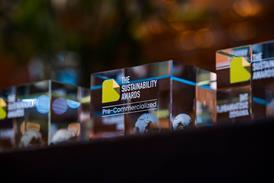
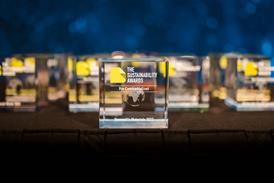
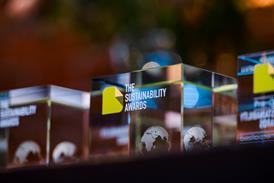
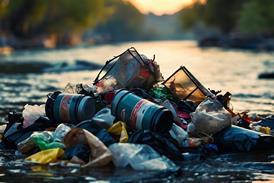











No comments yet